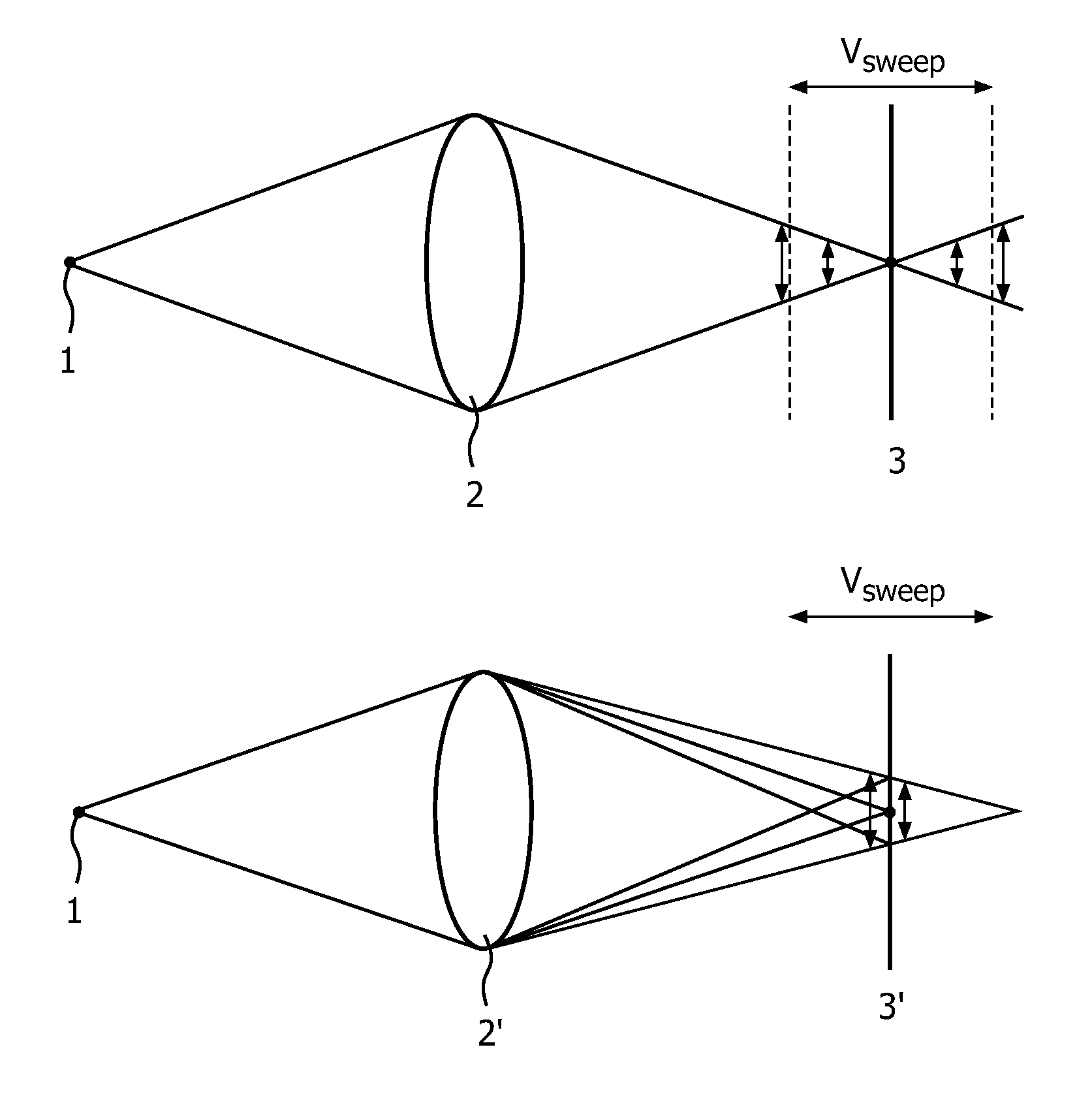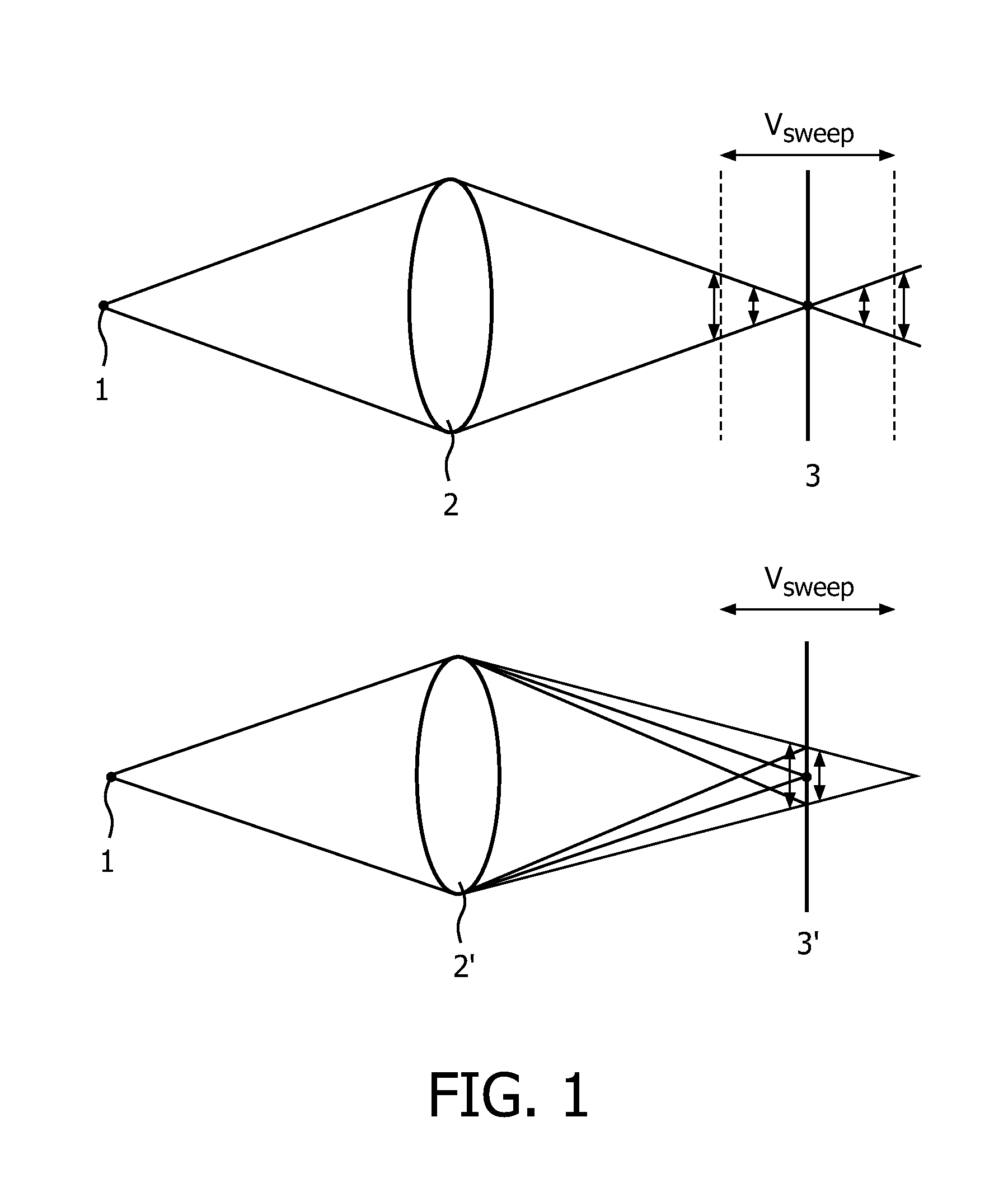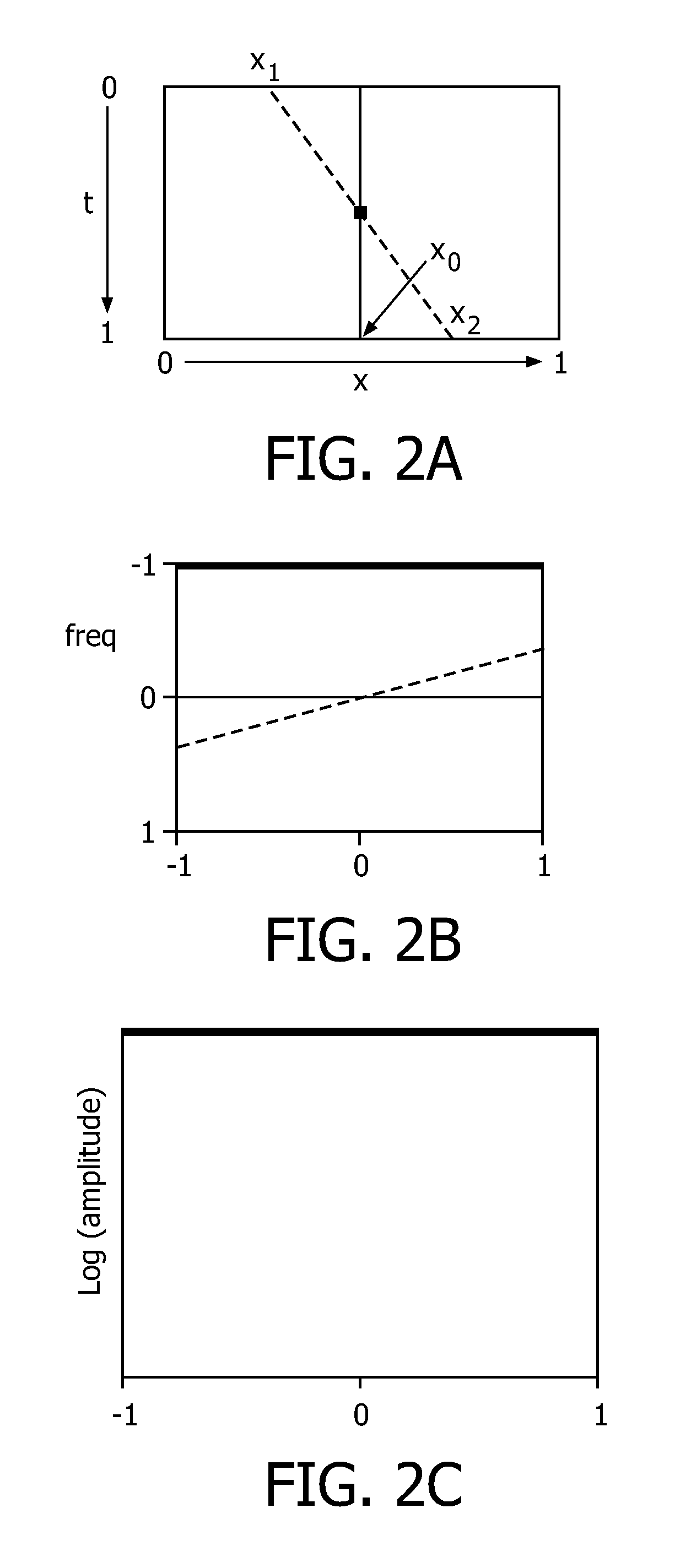Motion of image sensor, lens and/or focal length to reduce motion blur
a technology of image sensor and motion blur, applied in the field of cameras, can solve the problems of affecting the dynamic range of many cameras, the trade-off between motion blur and dynamic range is particularly troublesome, and the spatial blur of objects is difficult to reduce, so as to achieve the effect of effective reduction of motion blur
- Summary
- Abstract
- Description
- Claims
- Application Information
AI Technical Summary
Benefits of technology
Problems solved by technology
Method used
Image
Examples
Embodiment Construction
[0057]The invention is based on the insight that by changing the camera parameters during the exposure time, the characteristics of the recorded image can be modified. This is exploited to design a camera of which the motion blur is, within a practical speed range, almost independent of the motion of the objects and preferably one of which the frequency behaviour is such that the recorded signal is better suited for inverse filtering. This allows sharp images to be generated from longer exposure time recordings without the need for motion estimation. In other words, the camera in accordance with the invention can provide sharp images with high SNR even for very challenging optical imaging conditions: objects moving at various, unknown velocities under low illumination levels. To this end the sensor and / or the lens is, during the exposure time, moved along the optical axis, or alternatively or in addition, the focal length of the lens is modified during the exposure time. Changing th...
PUM
 Login to View More
Login to View More Abstract
Description
Claims
Application Information
 Login to View More
Login to View More - R&D
- Intellectual Property
- Life Sciences
- Materials
- Tech Scout
- Unparalleled Data Quality
- Higher Quality Content
- 60% Fewer Hallucinations
Browse by: Latest US Patents, China's latest patents, Technical Efficacy Thesaurus, Application Domain, Technology Topic, Popular Technical Reports.
© 2025 PatSnap. All rights reserved.Legal|Privacy policy|Modern Slavery Act Transparency Statement|Sitemap|About US| Contact US: help@patsnap.com



